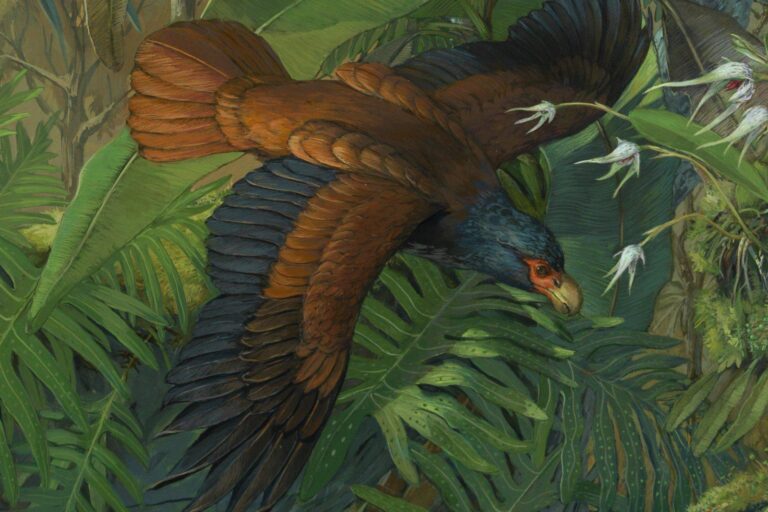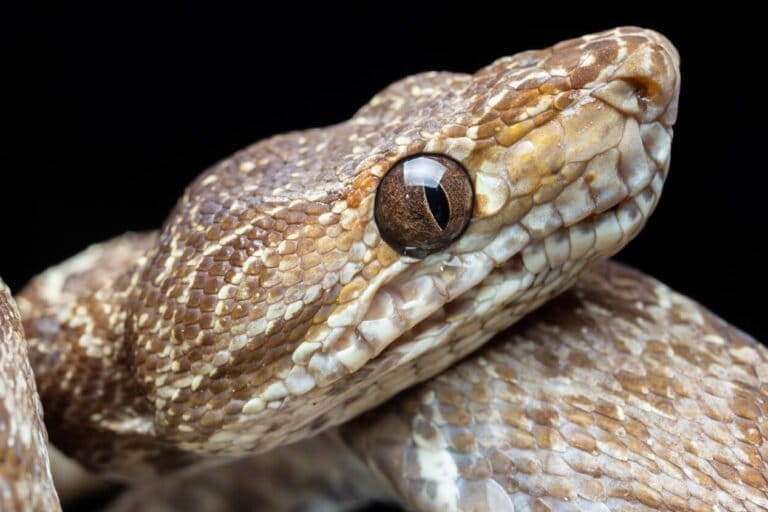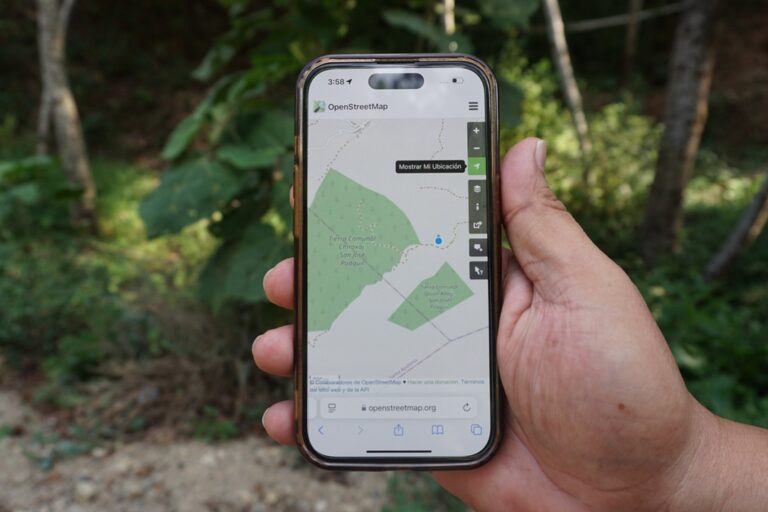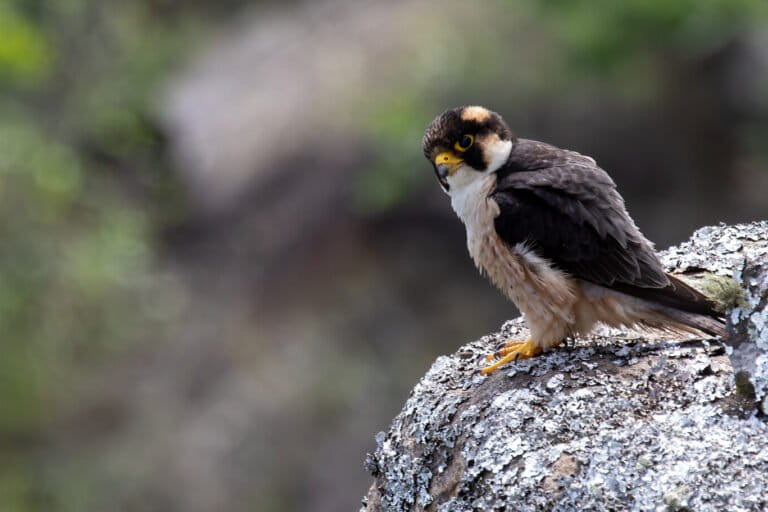These are sights that have rarely been seen by human eyes: a stealthy jaguar, a bustling giant armadillo, and, most amazingly, a sloth slurping up clay from the ground. A new compilation of camera trap videos from Yasuni National Park in the Ecuadorean Amazon shows a staggering array of species, many cryptic and rare.
“The Amazon rainforest is the greatest expression of life on Earth and Yasuni, in particular, has a tremendous global conservation significance,” says Diego Mosquera, head of the camera trap program and manager of Tiputini Biodiversity Station which is run by the Universidad San Francisco de Quito.
Although operating for less than two years, the video camera trap program at Yasuni has managed to take some of the most stunning footage of Amazon animals to date. Many of the current videos were taken from salt licks where animals congregate to consume some of the essential mineral.
“I was surprised about the wide diversity of animals on salt licks,” says Mosquera. “At least 20 species visit salt licks on a regular basis, some more often than others. Although we have been studying them for a while, it is still a sort of mystery how salt licks work. Many species, including mammals, birds and even reptiles go to salt licks for different reasons, but being able to record a sloth on the ground feeding from clay is priceless!”
Animal Symphony from Diego Mosquera on Vimeo.
However, Yasuni National Park, which some experts contend may be the most biodiverse place on the planet, is currently in peril. Portions of the park are already open to oil exploitation which has brought roads, infrastructure, pollution, and settlers. In addition, an innovative and ambitious program to leave the remotest part of the park (the Ishpingo-Tambococha-Tiputini blocs) untouched by oil companies was scrapped last year by President Rafael Correa. The initiative would have left the oil fields underneath these remote blocs unexploited if the international community had been willing to pay half the expected revenue or $3.6 billion. But money rolled in too slowly for the Correa Administration. Now, the government is rapidly pushing oil development in the ITT blocs, which is also home to indigenous tribes that have chosen isolation.
“[Yasuni] is one of the last wild places we have and its extraordinary biodiversity is the key to our future,” says Mosquera. “By protecting Yasuni we not only protect millions of species, but we also guarantee the ecological processes that are vital to our own survival”
To read more about Yasuni’s video camera trap program: Could camera trap videos galvanize the world to protect Yasuni from oil drilling?
Species in order of appearance:
- Mealy parrots (Amazona farinosa) and Blue-headed parrots (Pionus menstruus)
- Capybaras (Hydrochoerus hydrochaeris) and Giant Cowbird (Molothrus oryzivorus)
- White-lipped peccaries (Tayassu pecari)
- Jaguar (Panthera onca)
- White-bellied spider monkeys (Ateles belzebuth)
- Giant armadillo (Priodontes maximum)
- Red brocket deer (mazama americana)
- Red howler monkeys (Alouatta seniculus)
- Collared peccary (Pecari tajacu)
- Salvin’s currassow (Mitu salvini)
- Ocelot (Leopardus pardalis)
- Tapir (Tapirus terrestris)
- Black agouti (Dasyprocta fuliginosa)
- Grey-winged trumpeter (Psophia crepitans)
- Lowland Paca (Cuniculus paca)
- Giant anteater (Myrmecophaga tridactyla)
- Puma (Puma concolor)
- Bicolored porcupine (Coendou bicolor)
- Common piping guan (Pipile pipile)
- Two-toed sloth (Choloepus hoffmanni)
- Crab-eating raccoon (Procyon cancrivorus)
Related articles
High-living frogs hurt by remote oil roads in the Amazon

(01/14/2014) Often touted as low-impact, remote oil roads in the Amazon are, in fact, having a large impact on frogs living in flowers in the upper canopy, according to a new paper published in PLOS ONE. In Ecuador’s Yasuni National Park, massive bromeliads grow on tall tropical trees high in the canopy and may contain up to four liters of standing water. Lounging inside this micro-pools, researchers find a wide diversity of life, including various species of frogs. However, despite these frogs living as high as 50 meters above the forest floor, a new study finds that proximity to oil roads actually decreases the populations of high-living frogs.
Indigenous groups win right to pursue Chevron assets in Canada in Amazon pollution case
(12/19/2013) Indigenous plaintiffs in a long-running legal dispute against Chevron won the right to pursue the oil giant’s assets in Canada as part of a $9.5 billion judgement by an Ecuadorean court over damages in the Amazon, reports Amazon Watch.
Ecuador’s government shuts down indigenous rights organization over oil battle
(12/10/2013) Last Wednesday, the government of Ecuador shutdown the indigenous rights NGO, Fundación Pachamama, in Quito over the group’s opposition to oil drilling in indigenous areas. More than a dozen government officials showed up at Pachamama’s office with a resolution by the Ministry of Environment that officially dissolved the organization, the first such moved by the government which in June passed an Executive Decree that tightened governmental oversight of the country’s NGOs.

(11/13/2013) The plan from Ecuador’s government was simple: Pay us and we won’t destroy the planet’s most extraordinary ecosystem. Dubbed the Yasuni-ITT initiative, the plan called upon developed nations to pay for protecting Ecuador’s Yasuni National Park from oil companies. Now, a recent study claims the plan was fraught with flaws as basic as drawing lines on a map.

(11/12/2013) In August 2012, professional photographers Ivan Kashinsky and Karla Gachet were on assignment for National Geographic in Yasuní National Park, home to arguably the most biodiverse rainforest in the world. While there, they happened to take an aerial shoot above an area known as Block 31 (see Map), a controversial oil concession located in the heart of the park, at the precise moment that the national oil company, Petroamazonas, was secretly building a new oil access road.
Could camera trap videos galvanize the world to protect Yasuni from oil drilling?

(11/07/2013) Even ten years ago it would have been impossible to imagine: clear-as-day footage of a jaguar plodding through the impenetrable Amazon, or a bicolored-spined porcupine balancing on a branch, or a troop of spider monkeys feeding at a clay lick, or a band of little coatis racing one-by-one from the dense foliage. These are things that even researchers who have spent a lifetime in the Amazon may never see. Now anyone can: scientists at the Tiputini Biodiversity Station in Ecuador’s Yasuní National Park have recently begun using camera trap videos to take movies of animals few will ever view in their lifetimes. The videos—following years of photo camera trapping—provide an intimate view of a world increasingly threatened by the oil industry.
Over 100 scientists warn Ecuadorian Congress against oil development in Yasuni

(10/03/2013) Over 100 scientists have issued a statement to the Ecuadorian Congress warning that proposed oil development and accompanying roads in Yasuni National Park will degrade its “extraordinary biodiversity.” The statement by a group dubbed the Scientists Concerned for Yasuni outlines in detail how the park is not only likely the most biodiverse ecosystems in the western hemisphere, but in the entire world. Despite this, the Ecuadorian government has recently given the go-ahead to plans to drill for oil in Yasuni’s Ishpingo-Tambococha-Tiputini (ITT) blocs, one of most remote areas in the Amazon rainforest.
The case against Ecuador’s claims of ‘low-impact drilling’ in Yasuní

(09/16/2013) Ecuador’s President Rafael Correa recently announced to the world that he was ending the 6-year initiative aimed at avoiding oil drilling in a critical piece of the Amazon, the ITT Block of Yasuní National Park. In the speech, and the accompanying Decree, the President emphasized that the exploitation will affect less than 1% of the park. In subsequent remarks, President Correa indicated that the impacted area would be less than 0.001%. Thus, the new government pitch: minimum impact, maximum reward. Here, we counter that impacts related to biodiversity, indigenous people in voluntary isolation, and climate change may be severe.














